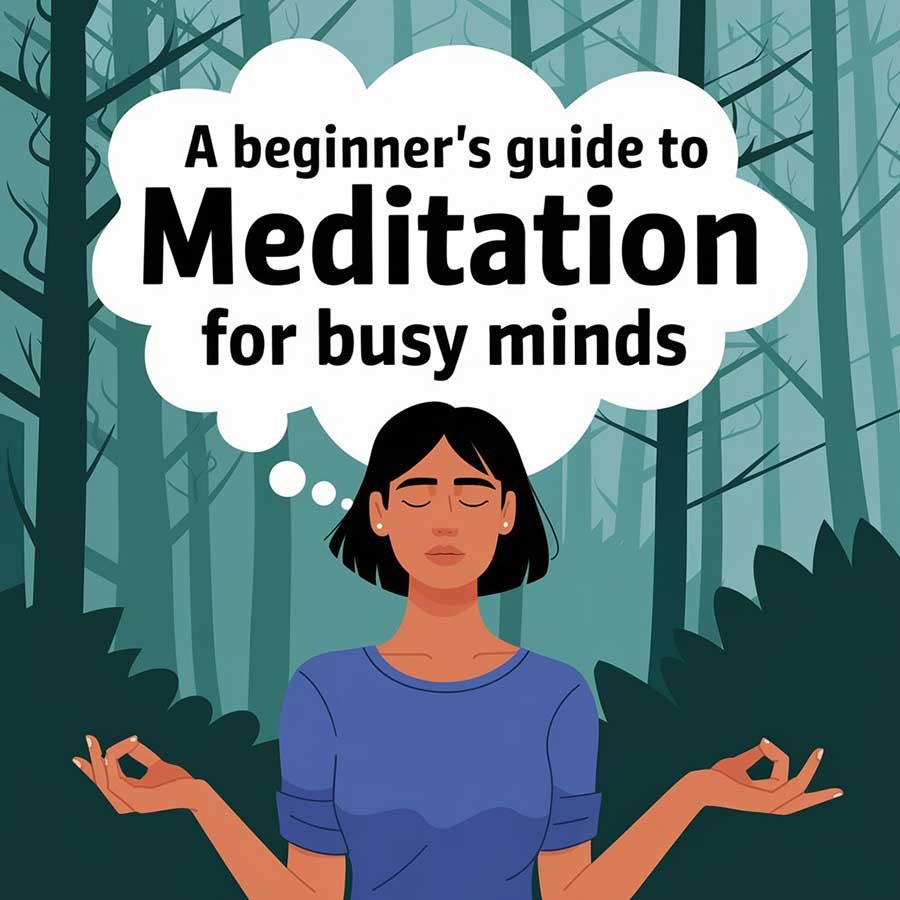
A Beginner’s Guide to Meditation for Busy Minds
Why Meditation is Essential for Busy Minds
In today’s fast-paced world, our minds are constantly overloaded with information, tasks, and distractions. Meditation offers a simple yet powerful way to calm the chaos, improve focus, and cultivate inner peace. Even if you feel like your mind is too busy to meditate, this guide will show you how to get started and make meditation work for you.
The Benefits of Meditation for a Busy Mind
- Reduces stress and anxiety by lowering cortisol levels.
- Enhances focus and mental clarity by improving concentration.
- Promotes emotional balance by increasing self-awareness.
- Improves sleep quality by calming the nervous system.
- Boosts overall well-being by fostering mindfulness and relaxation.
Overcoming Common Myths About Meditation
1. “I can’t meditate because my mind is too busy.”
Meditation isn’t about stopping thoughts; it’s about observing them without judgment.
2. “I don’t have time to meditate.”
Even just 2-5 minutes a day can make a difference. Short, consistent sessions are more effective than long, occasional ones.
3. “I have to sit cross-legged and chant.”
Meditation can be done sitting in a chair, lying down, or even walking. There’s no single right way to meditate.
Simple Meditation Techniques for Beginners
1. Mindful Breathing (2-5 minutes)
- Sit comfortably with your eyes closed.
- Take slow, deep breaths in through the nose and out through the mouth.
- Focus on the sensation of your breath entering and leaving your body.
- If your mind wanders, gently bring your focus back to your breath.
2. Body Scan Meditation (5-10 minutes)
- Close your eyes and take a few deep breaths.
- Bring awareness to different parts of your body, starting from your head and moving down to your toes.
- Notice any tension or sensations without trying to change them.
3. Guided Meditation (5-15 minutes)
- Use a meditation app or YouTube video to follow a guided session.
- Great for beginners who need structure and direction.
4. Mantra Meditation (5-10 minutes)
- Choose a simple phrase or word (e.g., “Calm” or “Peace”).
- Silently repeat the mantra with each breath.
- Focus on the rhythm of your mantra to anchor your attention.
5. Walking Meditation (5-10 minutes)
- Walk slowly and focus on each step.
- Notice the sensation of your feet touching the ground.
- Observe your surroundings with awareness.
Tips for Sticking to a Meditation Routine
- Start small. Even 2 minutes a day can have a big impact.
- Make it a habit. Meditate at the same time each day, like in the morning or before bed.
- Use reminders. Set a timer or use an app to stay consistent.
- Be patient. Meditation is a practice—progress comes with consistency.
- Embrace imperfection. Some days will be easier than others, and that’s okay.
Picture This
Imagine starting your day feeling centered and calm. Instead of rushing through your tasks with a scattered mind, you navigate challenges with clarity and ease. At night, your thoughts slow down effortlessly, allowing you to rest peacefully. Meditation makes this possible, even with just a few minutes of practice each day.
Share This with Someone Who Needs It
If you found this guide helpful, share it with a friend or colleague who could benefit from meditation. Let’s help more people find peace in a busy world.






